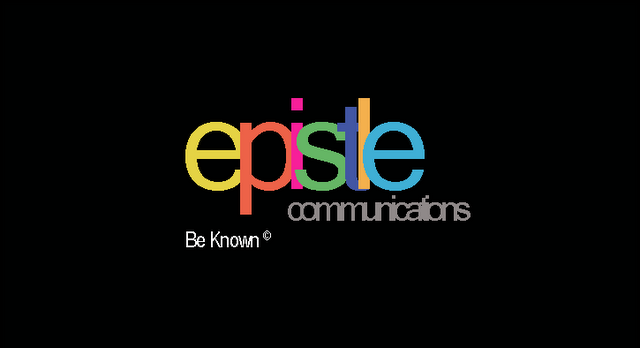From the article published in Pool Magazine, 2013
Design most often, is not
considered a business.
Someone has famously said that
architecture is a great profession and a terrible business. In today’s
globalised world, markets are in constant motion and new business can be
generated from multiple means. As architects, graphic designers, product
designers or even artists, we are all inherently trained to let our work speak for
itself. Stuck in the everyday rut of work, meetings, deadlines and ensuring the
deliverance of good design, often we do not tap into our business strengths and
how that can be a path to growth and success. Traditionally, most Indian
designers and design practices steer away from communication activities that
aid in generating business. In fact, we do not recognize that in this world of
increasing competition, the success of a firm can simply be hinged on design
communication.
The foremost challenge that most
designers struggle with is the notion that good design speaks for itself and
hence most professionals shy away, or simply do not bother to talk about their
work and the ideas behind it. Of course, good design is fundamental to good
business, but in the current scenario of technology and information overload,
originality, innovation and creativity are simply lost in the deluge of the
data that is produced globally. It is hence crucial to enhance visibility in a
framework that follows global standards. Specifically in India, the absence of
any permissible direct marketing activities means that the portfolio becomes
the most critical piece of the practice puzzle.
The premise of communication
activity begins with the intention for discourse, dialogue and exchange of
design ideas. First, the designers allow their work to be curated to suit the
various forms of media outreach. Second, this proliferation of good design in
the media furthers the quality of our built environment by inspiring students
and younger people in the profession, who have conventionally attached value
only to savvy images and last, but not the least, it furthers the cause of
design education by raising the bar, each time, a little bit. Success finds its
way through this means of design discourse by communicating various media - Designers
communicate their thought processes and how their designs are representative of
their intentions. Ultimately, this has explicit impact on the evolution of
contemporary Indian Design.
Plan: Have a plan. Designers shy away from words such as strategy,
brand recall and brand differentiation- if integrated with the process of design;
these can directly translate into creating strategic communication material by
showcasing work in appropriate and relevant forums. Having a plan is not a bad
idea after all- it helps you focus your outreach on the kind of business you
want to attract in the long run.
Perception: As designers and allied professionals, your work speaks
for itself. However, the process of getting new business often relies more on
how your work is perceived rather than the value it actually represents. Representing
work across various media including the firm’s website must be executed with
the intent of how the portfolio is being perceived by the audience, how the
reader understands the work. New business comes from a better understanding and
value perception of services.
Visibility: The biggest barrier to growth and success for design
firms is rarely creativity. Securing visibility for good work greatly helps in
fostering public appreciation and communication is vital in this regard. While
word of mouth is the conventional way to attract work, sustained visibility is
essential to establish credibility amongst the trade, enables better
discourse/engagement, whilst significantly improving future prospects. It is
however critical to distinguish between simple PR and Communications; stories
can be easily created, but it is imperative to lay emphasis on communicating
design- purely based on process and the strength of design intent.
Housekeeping: For most designers and design firms, communication
activities are essentially housekeeping. There is usually no dearth of content and
all that is required is curation. The projects are all on file, the drawings/photographs
are usually available. As much as this is a perceived as a chore, simple
processes can enable extraction of content, cleaning it up in order for it to
be of communicable quality and curated to generate media visibility.
Be Unique and Be Known©: There
is no manual or set guidelines that can enable an effective communications
plan. Each individual and firm is unique with a distinct design ethos and an
inimitable style and approach. The work must resonate the ethos, and of course
capture the essence of who the designer/firm is. What is critical is to
ascertain what that uniqueness is, and utilize it as both the means and end of
a communication plan.
Tools for communication today are
evolving from static print media of profiles, brochures and publications, to
web media, social media, to virtual and visual tools. Larger, established firms
have even started developing apps for i-devices for prospective clients and
ongoing project management. To keep pace with rapidly changing practices and be
at par with new values of the global economy, it is important to step back and
innovate. For someone doing commercial and corporate work, social media tools
such as Facebook may not be pertinent, but for others doing residential work, applications
such as Pinterest, Houzz and online web presence become essential. What is
imperative for both new, young firms and for those who are established is the
identification of the right strategy, and an apt approach; A simple, ingenuous
strategy with a strong vision and a deep commitment to the future of design,
and the built environment will surely lead the right way.
The fundamental key- is of course
is to ‘Be creative’. Communication will only help you ‘Be Known©’.
Tanya Khanna
Director, Epistle Communications
Original can be read here
